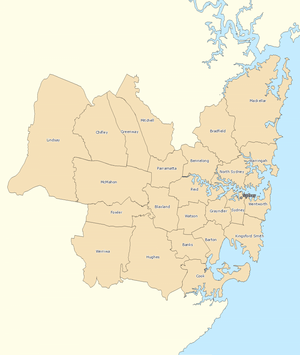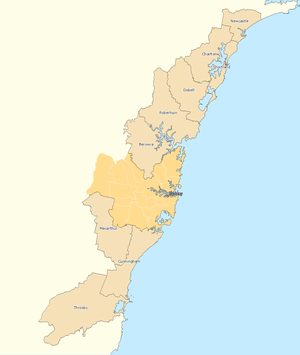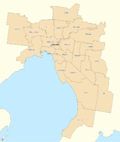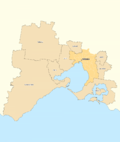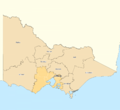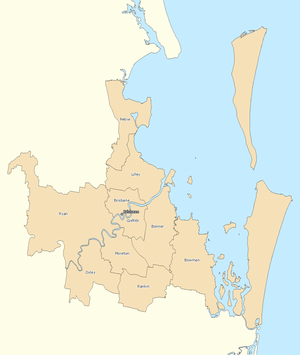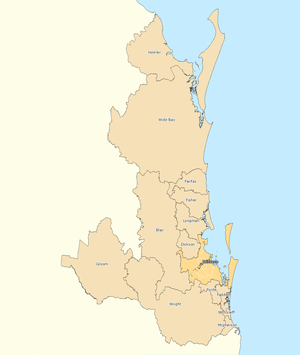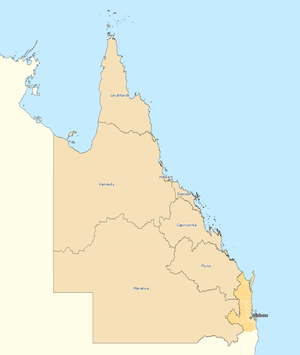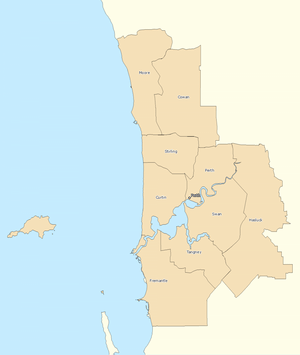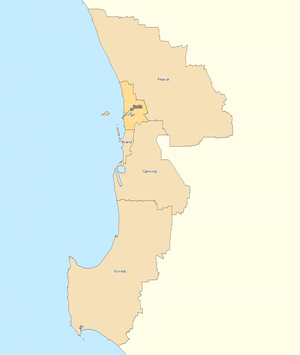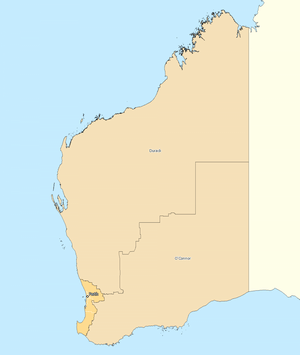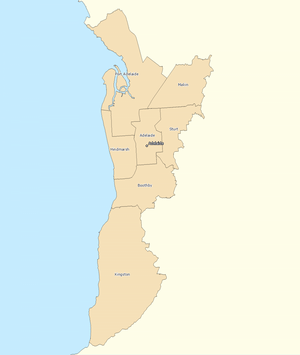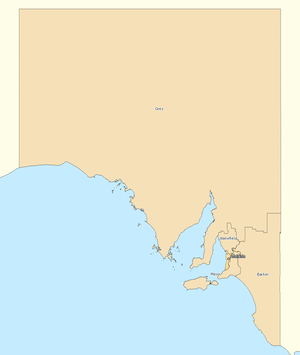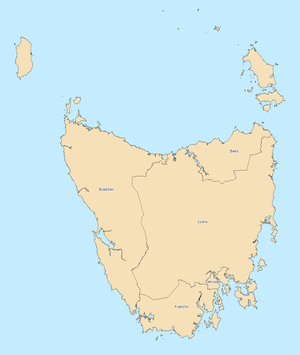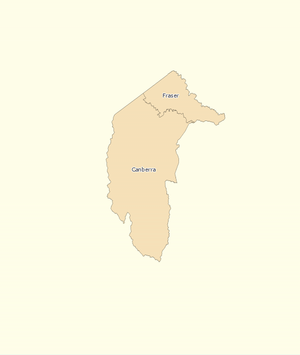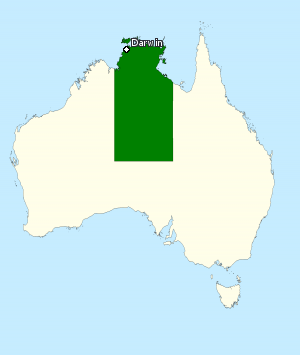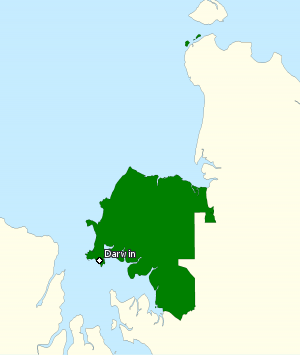Divisions of the Australian House of Representatives facts for kids
The Australian House of Representatives is where Australia's federal laws are made. People are chosen to represent different areas across Australia. These areas are called Divisions. You might also hear them called electorates or seats. There are 150 of these divisions in total.
Contents
Divisions are shared among Australia's states and territories. This is decided by the Australian Constitution and the Electoral Act. It's mostly based on how many people live in each area.
But there are a few special rules:
- Every original state must have at least five Members of Parliament. This means Tasmania gets more divisions than its population would normally allow.
- The Northern Territory has also been given extra representation recently.
- The Constitution says the House of Representatives should be about twice as big as the Senate.
Changing Division Boundaries
The borders of these divisions need to be redrawn regularly. This process is called redistribution. It happens at least every seven years. It also happens if a state's number of divisions changes.
A special committee draws these new borders. They look at the number of enrolled voters, not the total population. Enrolled voters are people who are registered to vote.
When drawing borders, the number of voters in each division cannot be too different. It can't vary by more than 10% from the average across the state. Also, it can't vary by more than 3.5% from the predicted average number of voters in three-and-a-half years.
Naming Divisions
The names of the House of Representatives divisions are quite unique. Many are not named after places or numbers. Instead, most are named after important Australians from history. These include former politicians (like Prime Ministers), explorers, artists, and engineers.
Sometimes, a division named after a place might not include that place anymore. For example, the Division of Werriwa was named after an Aboriginal word for Lake George. This lake is near Canberra. But the Werriwa division no longer includes Lake George. Its border is now 200km north of the lake!
The Australian Electoral Commission (AEC) is in charge of creating, removing, or changing division borders. They also decide on new names. Here are some of the rules the AEC uses for naming new divisions:
- Name them after deceased Australians who served their country well. Former Prime Ministers are often considered.
- Keep the names of divisions that existed when Australia became a nation in 1901.
- Try to avoid using place names.
- Use Aboriginal names.
- Do not use names that are already used for state electoral districts.
List of Commonwealth Electoral Divisions, 2010-
The maps below show the division borders as they were for the election in 2010.
New South Wales
There are 48 Divisions:
Victoria
There are 37 Divisions:
Queensland
There are 30 Divisions:
Western Australia
There are 15 Divisions:
- Brand
- Canning
- Cowan
- Curtin
- Durack
- Forrest
- Fremantle
- Hasluck
- Moore
- O'Connor
- Pearce
- Perth
- Stirling
- Swan
- Tangney
South Australia
There are 11 Divisions:
Tasmania
There are 5 Divisions:
The Territories
Australian Capital Territory There are 2 Divisions:
- Canberra
- Fraser (also covers Jervis Bay Territory)
Northern Territory There are 2 Divisions:
- Lingiari (also covers Christmas Island and Cocos (Keeling) Islands)
- Solomon
Abolished Divisions
These Australian electoral divisions no longer exist.
|
|
|
|
Images for kids
-
Map of the 151 electoral divisions to the House of Representatives (blank) in use for the 2019 election.


